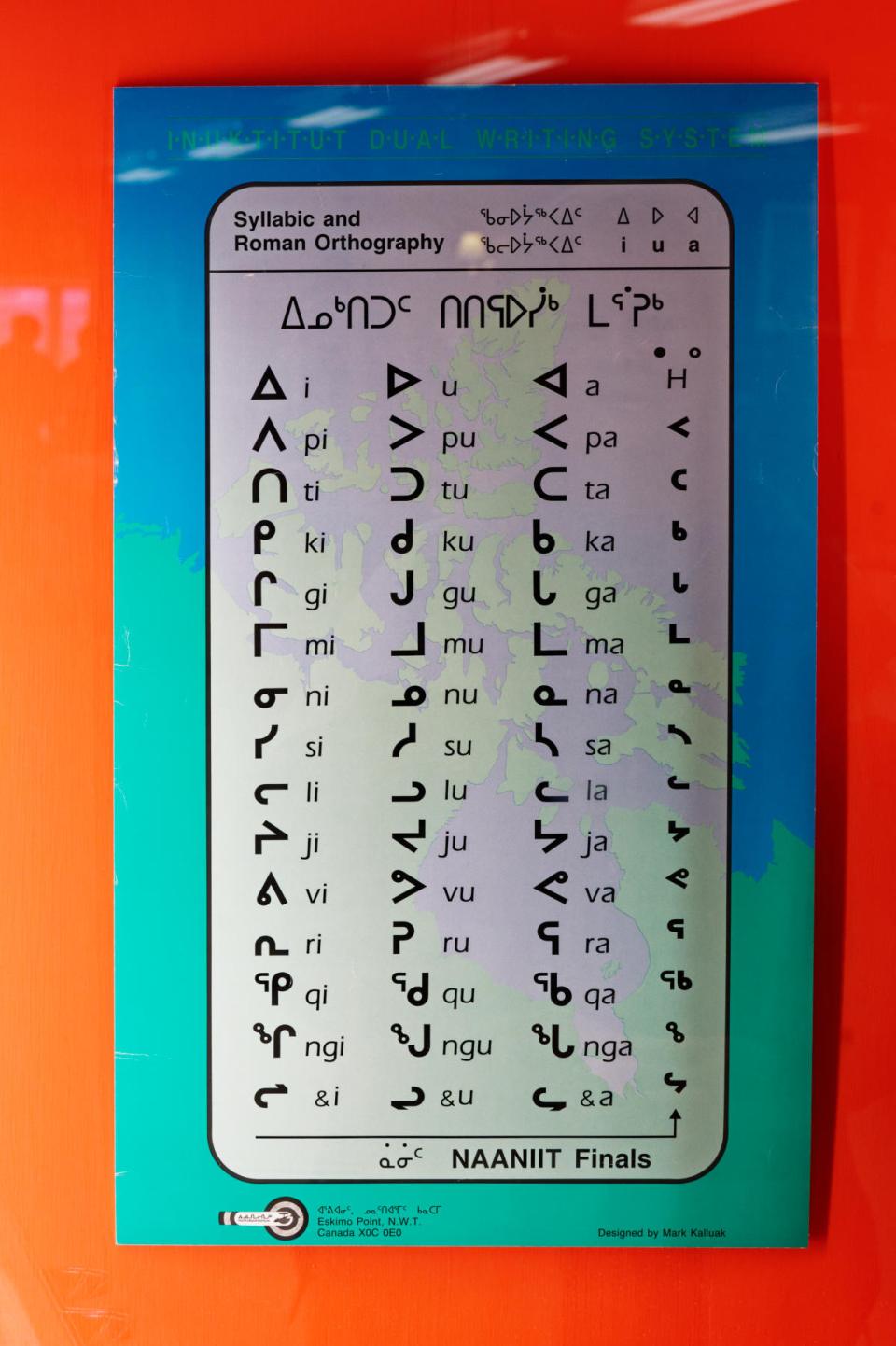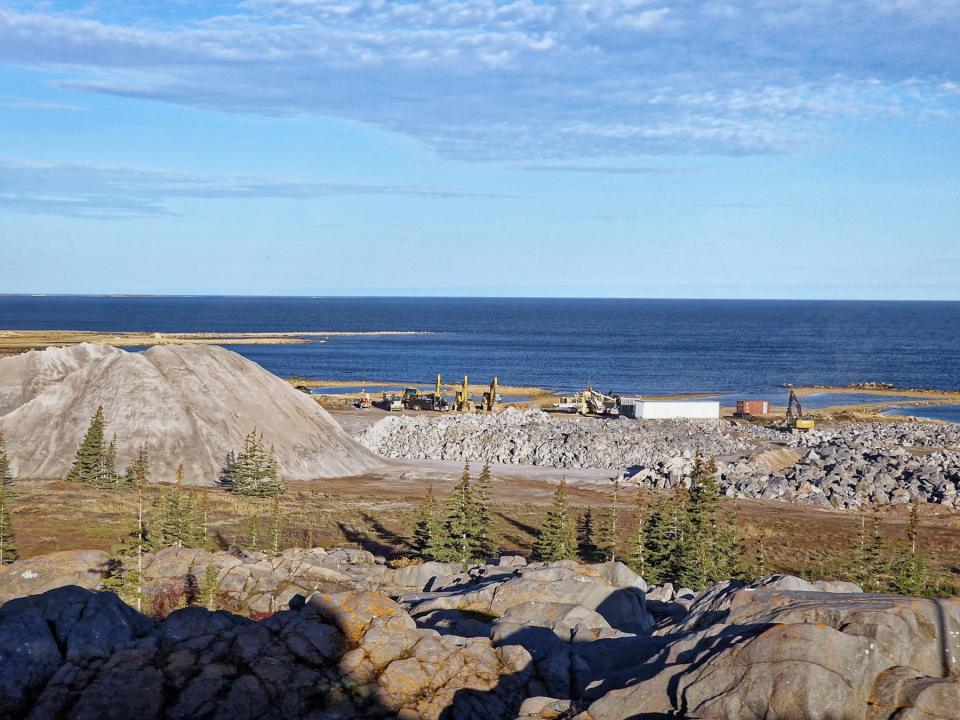Saturday 1 October 2022 – Warning – lots of photos for you to wade through today!
Pinch, punch, first of the munch. (I hate assonance.) One week to go before we head back to the UK and we start our penultimate adventure, our time in Nova Scotia. As expected, yesterday, spent as it was in travelling two time zones eastwards from Winnipeg to Halifax, was entirely devoid of anything worth telling you about with the possible exception of the taxi ride from Halifax airport to our hotel. The (somewhat elderly) taxi driver started out being courteous and interesting and ended up ranting about the incompetence of government and the unfairness of taxes. He also delivered us to the wrong hotel, but was good enough to apologise and drive us to the right one.
So, today we found ourselves in the capital city of Nova Scotia with reasonable weather in prospect, so there was only one thing for it, which was to go for a walk. Obviously.
We had a chat with a very nice chap at the concierge desk, Tim. One thing we wanted to understand was whether there was a tall building which would give us a view over the city. Our thought was that it would be nice to be able to look down over the Citadel, which is a star-shaped fortress, to appreciate its shape. Tim suggested we go with him; he took us to the top floor of the hotel and unlocked the banqueting suite there, proudly telling us that this was the banqueting facility with the best view in the city. To be fair, it was not at all bad.


It didn’t however, give us the view over the citadel that we’d really have liked, but it did have an interesting ceiling with some great chandeliers.

The other nugget that we learned from Tim was that Halifax has its own (modest) equivalent of Toronto’s underground city, although here it’s overhead rather than underground. It’s called the Pedway, and you can see one of its aerial corridors crossing the road in the second of the view photos above. Of course we had to go and explore it. As with Toronto and Montreal, it’s linkways between halls, with some stores and eateries,


but is still in development – there are many hoardings promising a bright future with more stores to be opened.

It also gave us a view back to our hotel – you can see the inward-sloping windows of the banqueting suite at the top of it.

We also had a chat with Tim about the hotel, which is a curious mix of modern and dowdy, more old-fashioned areas (e.g. the wing where we have our room). It turns out that a complex set of circumstances involving mergers, takeovers, divestitures and pandemics means that planned improvements have not yet started.
Anyhow, we had more of the city to explore, so we headed out to wander about according to the plan that Jane had formulated. We passed City Hall

which overlooks the Grand Parade.


As you might infer from the picture above, an event was brewing in the Grand Parade, involving people of African-Canadian extraction, dressed in their finery and setting up a sound deck. Their mood was jolly and we hope they had a good time, but we had a city to explore so had to move on. Before we did, though, I took a picture of a mural that overlooked a building site

and the City Clock.

Behind the clock above, you can see a hill, atop which is the historic Halifax Citadel (climbing it also gives a nice view over the city’s impressive – but closed for maintenance – Angus L. Macdonald Bridge and the Clock).


We decided to visit the Citadel, as they offered a decently low entry price for us two old people, and so began to appreciate that Halifax has a great historical richness. The Citadel was first established in 1749, and the present citadel, built starting in 1828, is actually the fourth fortification built on the site.
The citadel’s fortifications were built and rebuilt to defend the town from various enemies – the indigenous Mi’kmaq and Acadians, for example, raided the capital region (Halifax and Dartmouth) 12 times, four times against Halifax itself. While never attacked, the Citadel was long the keystone to defence of the strategically important Halifax Harbour and its Royal Navy Dockyard.
The present citadel took thirty years to build and the general introduction of rifled artillery (with greater range and accuracy than earlier guns) shortly after its completion rendered the costly installation obsolescent. It was partially rearmed in the 1860s and 1870s, and continued in use as a barracks into the 20th century.
It is easy to understand its superb strategic location, overlooking the original town and harbour. It’s a very well-maintained institution, staffed with people dressed in period costumes who can tell you about various facets of life there in the 18th Century.
The central courtyard

is littered with cannons

as are the ramparts,

including a 12-pounder

which is still active and which is fired every day at noon – apparently a really loud bang.
After our visit, we walked along to the Public Gardens, a very pleasant environment.





Items of interest included a weeping beech tree

and a beautifully-coloured Blue Jay.

After the gardens, we passed the statue of Winston Churchill

were checked out by a starling

and then visited St. Mary’s Basilica,

a cathedral with a very handsome interior.



I was particularly struck by the stained glass half-dome above the altar. It being in the competitive nature of these things, the cathedral has, close by, the Anglican Church of St. David and

St. Matthew’s United Church.
Our rambling then took us in the general direction of the harbour, but en route we noticed that among all the modern high-rise constructions there are plenty of handsome old buildings in the city.





The downtown area has some interesting buildings, too;




and we were pleased to note that there is street art among the attempts to make the city look attractive.




We reached the harbour clock

which marks the start of a boardwalk stretching a couple of kilometres south, from the ferry terminal to the seaport. A lot of effort has gone into making this an attractive and pleasant area to walk, with artworks both mysterious and quirky along its length

(the tower structure is covered with plastic flaps, which flutter in the breeze – it’s rather lovely)





(the above street-light diptych is called “Get Drunk, Fall Down”)

as well as eating and drinking establishments. One of them, the BG (Halifax Beer Garden), was obviously paying its local tribute to Germany’s Oktoberfest, it being October first and that.
There is a life-size replica of the flagship of Ferdinand Magellan’s voyage of circumnavigation, 1519-1522 – the Trinidad

which in its day would have had 45 crew on board. I know people were smaller in those days, but I reckon it would still have been pretty cosy.
The rest of the walk down to the seaport passes many items of statuary – The Émigré, A tribute to Women in History, Samuel Cunard and three of the many examples of what might be figureheads that line the boardwalk here.






One significant statue is of Ruth Goldbloom, who fought for Pier 21 in the seaport to be restored and commemorated in recognition of the nearly one million immigrants who were processed through it between 1928 and 1971.

The plan was to get to Pier 22 which we thought might have some nice eateries and/or drinkeries. We were wrong. It turns out to be a tourist tat haven only open on cruise ship days intended, I imagine, to attract people who are boarding and who need to find just that one more special something for a special someone. Since there was a cruise ship in, only slightly larger than the substantial buildings of Pier 22,

it was open.


By this time, we were feeling somewhat sharp set, so we made our way back along the boardwalk with the idea of eating at a place that we’d seen earlier on, called Sea Smoke. There was a diversion en route in the form of a 1968 Routemaster London Bus,

used for hop-on-hop-off tours and, unsurprisingly, somewhat modified from the original,

because getting off the way we UK folk might consider would probably precipitate a traffic accident and lot of attendant paperwork. So an alternative exit is needed for the passengers

and an alternative entry for the driver.

As we ate our (very fine) meal at Sea Smoke, the cruise ship which had been at Pier 22 came by on its way out;

I’ve never seen so many radar aerials on a boat before.

We watched the ship do a graceful pirouette before exiting the harbour and then we ourselves exited the restaurant, which is distinguished by having many fire tables outside – very pleasant as the evening was chilly.

By this time, the light was fading (possibly matching your interest level in this post).

We passed a final, mystery piece of art


and then, as the evening light flared and then died,


we made our way back to the hotel.
Again, sorry for a long post with lots of photos, but I hope you found the read worthwhile. We had a really enjoyable day discovering the historical, arty and eat-y sides of Halifax, which comes across as being a very pleasant place to be.
Tomorrow has a planned excursion, if all goes well – a 10 mile hike. If we survive, I will be sure to document our progress here, but for now it’s time for bed. See you tomorrow!
















































